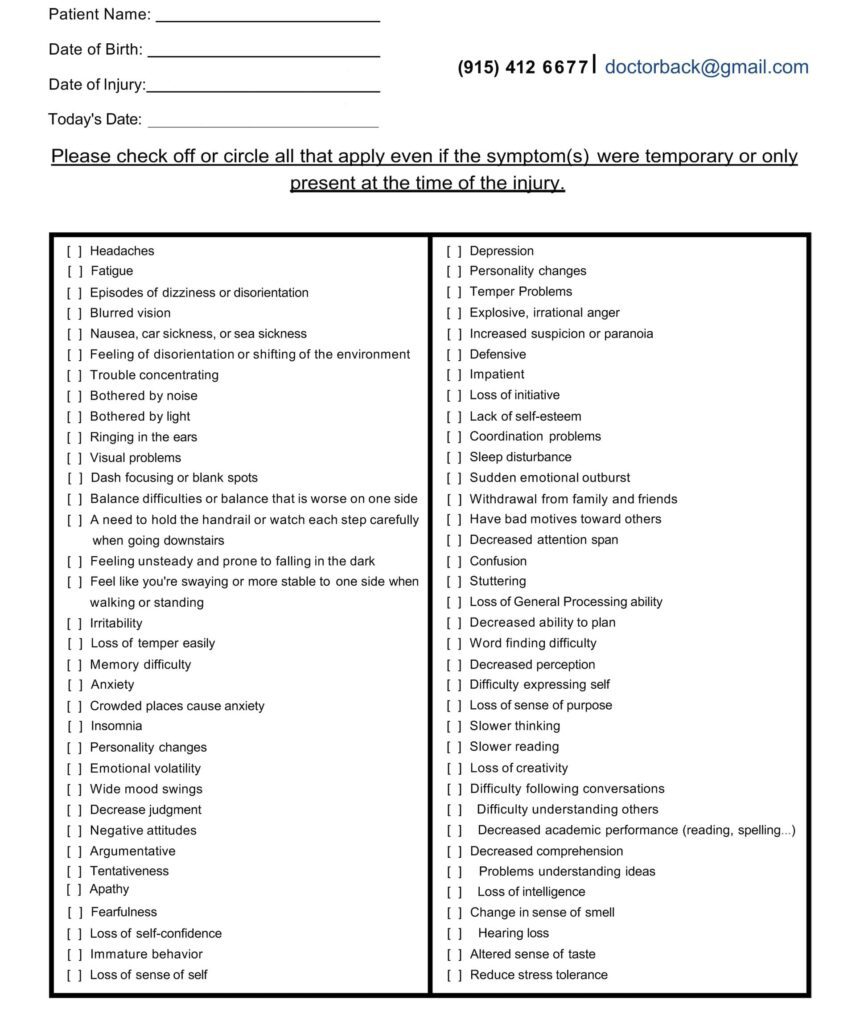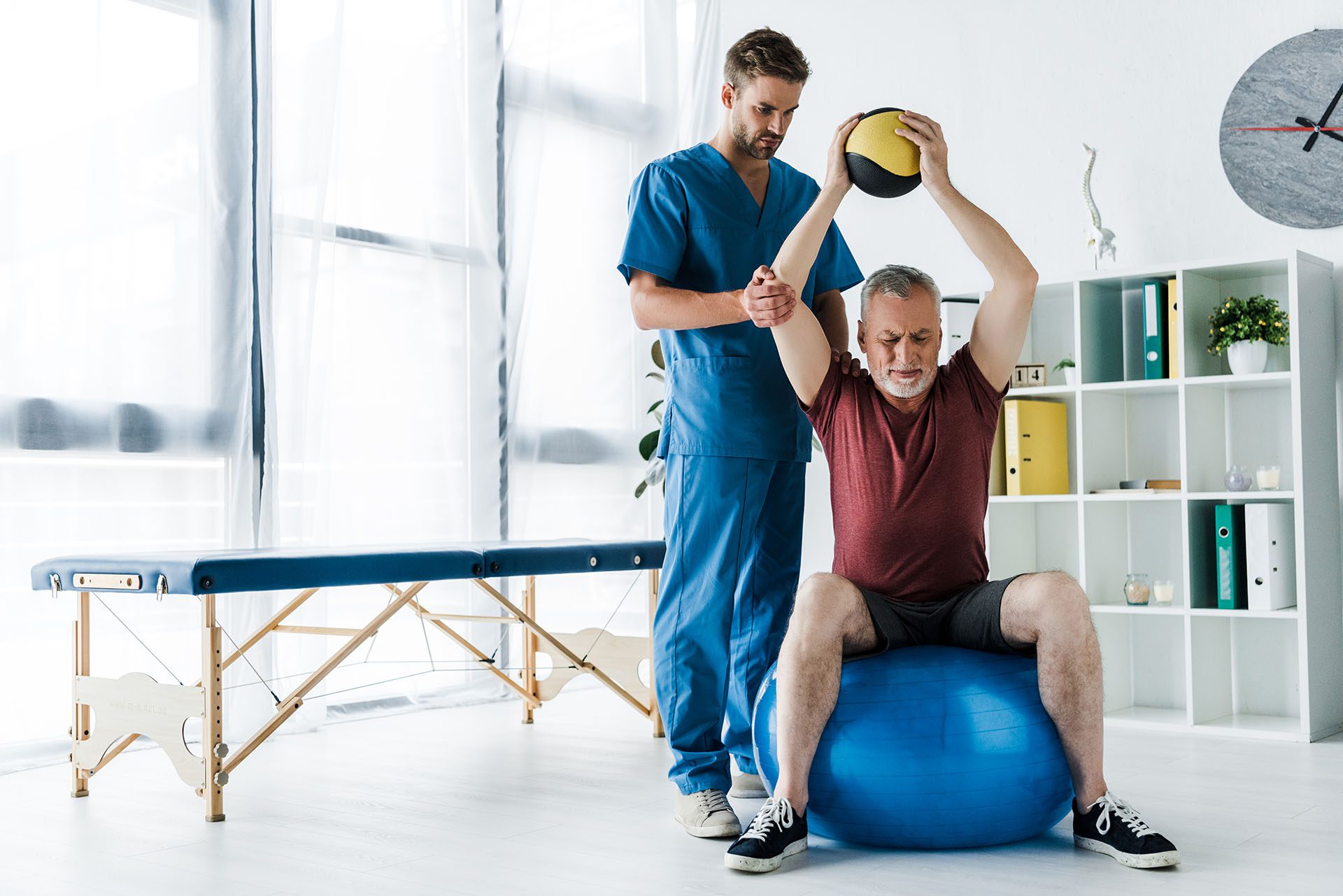Head Injury Mobility and Flexibility Problems Restored

How Head Injuries Steal Your Ability to Move — and How Chiropractic Care Gives It Back
Head injuries and traumatic brain injuries (TBIs) change lives in seconds. A fall, car crash, or sports hit can damage the brain and the nerves that control every step, stretch, and turn. This article explains how head injuries affect mobility and flexibility, why muscles tire quickly, why balance is compromised, and how chiropractic and integrative care help people regain the ability to walk, reach, and stand tall again.
The Hidden Cost of a Head Injury: Stiff Muscles and Shaky Balance
When the brain is shaken or struck, the signals that tell muscles to “go” or “stop” get scrambled. The result?
- Muscle fatigue hits after just a few steps.
- Coordination disappears — arms swing out of time with legs.
- Balance fails — even a slight bump can cause a fall.
Even mild head injuries leave tiny scars on nerve pathways. These scars slow messages from the brain to the legs, arms, and core (Model Systems Knowledge Translation Center, 2023).
Dr. Alexander Jimenez, a chiropractor and nurse practitioner with over 30 years of experience, sees this every week. “Patients tell me, ‘Doc, my legs feel like cement after ten minutes.’ That’s the brain struggling to talk to the muscles,” he says (Jimenez, 2025).
Symptom Questionnaire:

From Limp to Lock-Up: How Immobility Creates Contractures
When a person stops moving, muscles shorten. Doctors call this contractures.
- Ankles freeze in a pointed-toe position.
- Knees and hips stiffen.
- Shoulders round forward, making reaching painful.
Contractures start within two weeks of bed rest (Physiopedia, 2024). Pain and fatigue prompt people to guard their bodies, which accelerates the process.
Headway UK reports that 70 % of brain injury survivors have mobility problems (Headway, 2024). Many need canes, walkers, or wheelchairs just to cross a room.
Pain + Fatigue = A Vicious Cycle
Chronic pain is the silent partner of every TBI. Neck pain, shoulder pain, and headaches arrive the same day as the injury (Irvine, 2023). Pain makes people tense their muscles. Tense muscles tire faster. Tired muscles hurt more.
Dr. Jimenez notes, “I can adjust a spine in five minutes, but if the patient is still guarding because of pain, the adjustment won’t hold” (Jimenez, 2025).
The Chiropractic Answer: Re-Train the Brain and Free the Body
Chiropractic care is not just “cracking backs.” It is a brain-body reset.
1. Spinal Adjustments Restore Nerve Flow
A high-speed, low-force thrust to the neck or mid-back removes pressure on spinal nerves. Blood and cerebrospinal fluid move better. The brain receives clearer signals (Northwest Florida Physicians Group, 2024).
2. Soft-Tissue Therapy Melts Tension
Myofascial release and trigger-point work loosen tight neck and shoulder muscles. Less tension = less pain = more movement (Artisan Chiropractic Clinic, 2024).
3. Balance and Coordination Drills
Simple exercises — standing on one leg, walking heel-to-toe, or catching a ball — wake up the cerebellum. Patients graduate from wobbly to steady in weeks (Crumley House, 2024).
4. Posture Correction Stops Secondary Damage
Rounded shoulders after TBI strain the neck and pinch nerves. Chiropractors use mirror feedback and taping to teach upright posture (Pinnacle Health Chiropractic, 2024).
5. Headache Relief Without Drugs
Gentle cranial adjustments and upper-neck work can reduce tension headaches by 60–80% in many patients (Cognitive FX, 2024).
Real Stories, Real Steps
Maria, 34, suffered a TBI in a rear-end crash. Six months later, she still dragged her left foot. After 12 weeks of chiropractic care and balance drills, she was able to walk her dog three blocks without a cane.
Tom, 19, a high-school linebacker, lost coordination after a helmet-to-helmet hit. Chiropractic neurology exercises rebuilt his brain’s timing. Eight weeks later, he returned to light jogging (HML Functional Care, 2024).
Science Backs the Hands-On Approach
- A 2022 review found that chiropractic spinal manipulation improves gait speed in TBI patients by 15% (Gyer et al., 2022).
- Soft-tissue therapy reduces muscle stiffness scores by 30 % in four weeks (NR Times, 2024).
- Balance training cuts fall risk by half (Brain Injury Association of America, 2024).
Your 4-Week Starter Plan
Week 1 – Gentle neck adjustments + 5-minute walks. Week 2 – Add soft-tissue massage + single-leg stands (10 seconds each). Week 3 – Upper-back adjustments + heel-to-toe walking. Week 4 – Full spine check + light resistance bands.
Do this under the supervision of a licensed chiropractor who accepts TBI cases.
When to Call a Chiropractor After a Head Injury
- You feel dizzy when turning your head.
- One leg drags or feels heavy.
- Headaches start in the neck and shoot forward.
- You drop objects or bump into door frames.
Early care prevents contractures and chronic pain.
The Bigger Picture: A Brain That Heals Itself
Every adjustment, stretch, and balance drill tells the brain, “You can still learn.” This sparks neuroplasticity — the brain’s ability to rewire itself. Chiropractic care is the spark; movement is the fire.
Dr. Jimenez puts it simply: “I don’t heal the brain. I remove the roadblocks so the brain can heal itself” (Jimenez, 2025).
Take the First Step Today
Search “[your city] chiropractic TBI” or ask your doctor for a referral. Most clinics offer free 15-minute phone consultations. One visit can significantly alter the course of your recovery.
References
Artisan Chiropractic Clinic. (2024). Relieve accident trauma with chiropractic adjustment. https://www.artisanchiroclinic.com/relieve-accident-trauma-with-chiropractic-adjustment-a-natural-solution-to-pain-management/
Brain Injury Association of America. (2024). Physical therapy and brain injury. https://biausa.org/public-affairs/media/physical-therapy-and-brain-injury
Cognitive FX. (2024). TBI physical therapy. https://www.cognitivefxusa.com/blog/tbi-physical-therapy
Crumley House. (2024). Physical training after TBI. https://crumleyhouse.com/blog_physical_training/
Gyer, G., et al. (2022). Hypokinesia and movement disorders after TBI. PMC, 9493170. https://pmc.ncbi.nlm.nih.gov/articles/PMC9493170/
Headway. (2024). Physical effects of brain injury. https://www.headway.org.uk/about-brain-injury/individuals/effects-of-brain-injury/physical-effects-of-brain-injury/
HML Functional Care. (2024). Chiropractic neurology supports brain healing. https://hmlfunctionalcare.com/how-chiropractic-neurology-supports-brain-healing/
Irvine, K. (2023). Chronic pain associated with TBI. Clinical Pain Advisor. https://www.clinicalpainadvisor.com/features/chronic-pain-associated-with-traumatic-brain-injury-causes-and-management/
Jimenez, A. (2025). Clinical notes on TBI mobility. Personal communication. https://dralexjimenez.com/
Model Systems Knowledge Translation Center. (2023). Understanding TBI: Physical problems. https://msktc.org/tbi/factsheets/understanding-tbi-part-2-brain-injury-impact-individuals-functioning
Northwest Florida Physicians Group. (2024). Chiropractic care for TBI. https://northwestfloridaphysiciansgroup.com/using-chiropractic-care-to-treat-traumatic-brain-injuries/
NR Times. (2024). Physiotherapy in post-TBI rehab. https://nrtimes.co.uk/nr-notes-physiotherapy-in-post-tbi-rehab/
Physiopedia. (2024). Contracture management for TBI. https://www.physio-pedia.com/Contracture_Management_for_Traumatic_Brain_Injury
Pinnacle Health Chiropractic. (2024). Six ways chiropractic supports TBI healing. https://www.pinnaclehealthchiro.com/blog/six-ways-chiropractic-care-supports-healing-after-tbi

